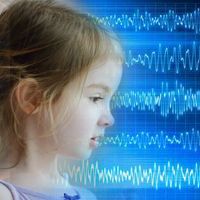Article
Functional Connectivity Is Different for Kids with Autism
Author(s):
Children with autism have a distinctly different functional connectivity, federal researchers report.

A recent study revealed that children with autism have distinctly different functional connectivity than neurotypical children or children who are developmentally delayed. The differences are state and region related, and characterized “by a dynamically evolving pattern of altered connectivity.” Ashura Buckley, MD, of the National Institute of Mental Health at the National Institutes of Health, in Bethesda, Maryland, and colleagues investigated the differences in brain “connectivity in children with autism to that of typically developing controls and children with developmental delay without autism.” Their work was published in EBioMedicine on November 5, 2015.
There were 137 children between the ages of 2 and 6 years included in the study. The cohort included 87 children with autism, 21 with developmental delay without autism, and 29 children developing typically (TYP). The researchers “assessed EEG spectral power, coherence, Pearson and partial correlations, and epileptiform activity during the awake, slow wave sleep (SWS), and REM sleep states.”
It has long been known that there are differences in connectivity and coherences between typically developing children and those with autism spectrum disorder (ASD). Studies using magnetic resonance imaging (MRI), diffusion tensor imaging (DTI), electroencephalogram (EEG), and magnetoencephalography (MEG) have all produced mixed results. The researcher in this study posit that the “great variability in cohorts studied, age of subjects, state examined, patient number, and approach to data analysis likely all contribute to the lack of consensus.”
In this study, there were many differences observed between the three groups. According to the researchers, “Most striking was the increased coherence observed in ASD relative to TYP, almost exclusively during during SWS, concentrated in the frontal-parietal pairs.” The role of sleep in the developing brain is an area of intense study currently. The researchers conclude that “further evaluation of sleep coherence during critical windows of neuromaturation is clearly important to our understanding of neurodevelopmental disorders.”




